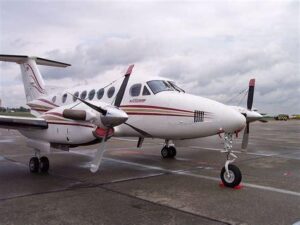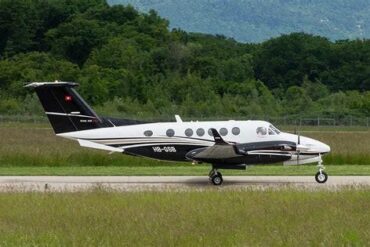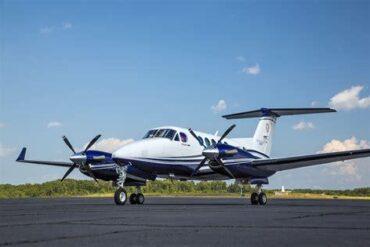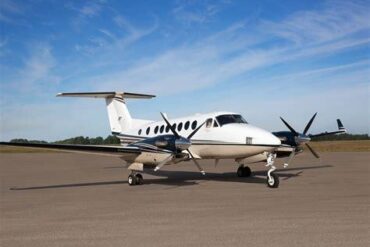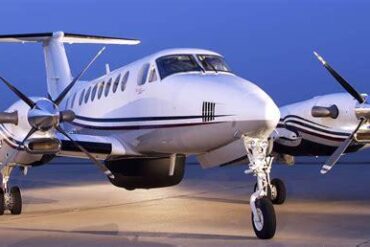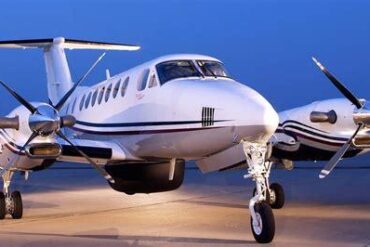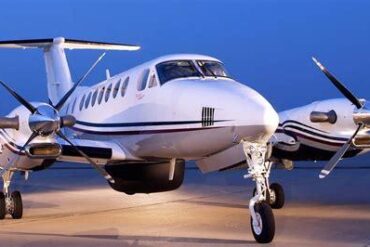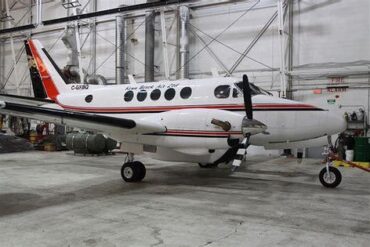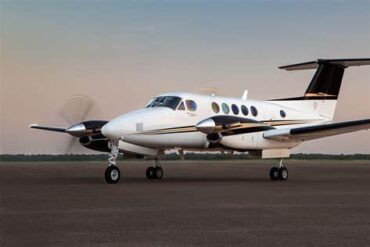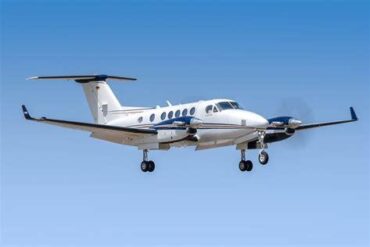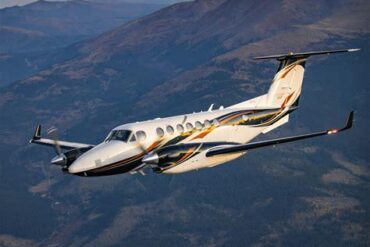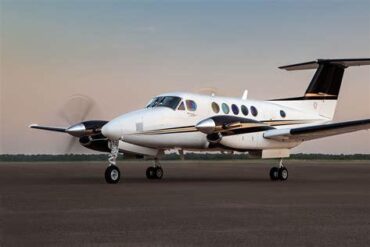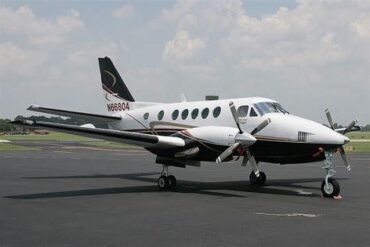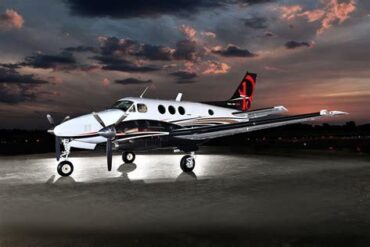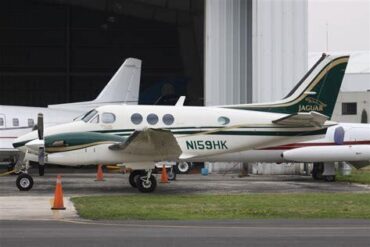The Beechcraft King Air 200 is a versatile and popular twin-turboprop aircraft that has established itself as a leader in the light aircraft segment. Known for its reliability, range, and performance, the King Air 200 is often sought after by business travelers and charter operators alike. In this article, we delve into the price of the King Air 200 and explore its operating costs, providing a comprehensive overview for potential buyers and operators.
Overview of the Beechcraft King Air 200
The Beechcraft King Air 200 was introduced in the late 1970s and has since evolved into one of the most successful turboprop aircraft ever produced. With its spacious cabin, impressive performance capabilities, and advanced avionics, the King Air 200 is designed to meet the needs of both corporate aviation and personal travel. The aircraft typically seats between 6 to 8 passengers comfortably, making it an ideal choice for small groups traveling long distances.
Key Specifications
-
Length: 15.7 meters (51 feet 5 inches)
-
Wingspan: 17.6 meters (57 feet 11 inches)
-
Height: 4.57 meters (15 feet)
-
Maximum Takeoff Weight: 5,670 kg (12,500 lbs)
-
Cruise Speed: Approximately 300 knots (345 mph)
-
Range: About 1,800 nautical miles
Market Price of the Beechcraft King Air 200
When considering the purchase of a Beechcraft King Air 200, potential buyers should be aware of the current market prices, which can vary significantly based on factors such as age, condition, and equipment installed. As of 2023, the price range for a used King Air 200 typically falls between $1.5 million and $3 million.
Factors Influencing Price
-
Age and Condition: Newer models and well-maintained aircraft generally command higher prices. For example, a King Air 200 manufactured in the last decade may be priced towards the higher end of the spectrum.
-
Avionics and Modifications: Upgraded avionics and customized interiors can significantly influence the aircraft’s market value. Models equipped with state-of-the-art navigation systems or luxurious cabin finishes are often sold at a premium.
-
Total Flight Hours: The number of flight hours on the airframe and engines can affect pricing. A King Air 200 with low total time is typically more desirable.
-
Maintenance History: A documented history of regular maintenance and adherence to service schedules can enhance an aircraft’s value. Buyers often look for aircraft with comprehensive maintenance records.
Operating Costs of the Beechcraft King Air 200
Understanding the operating costs associated with the King Air 200 is crucial for potential owners and operators. These costs encompass various factors, including fuel, maintenance, insurance, and crew salaries.
1. Fuel Costs
The King Air 200 is powered by two Pratt & Whitney PT6A-42 engines, which provide excellent performance while maintaining reasonable fuel efficiency. The fuel consumption rate is approximately 50 gallons per hour (GPH). Given the average price of aviation fuel, the fuel costs can be estimated around $300 to $600 per flight hour, depending on fuel prices in the region.
2. Maintenance Costs
Regular maintenance is essential for ensuring the safety and longevity of the King Air 200. Annual maintenance costs can range from $30,000 to $50,000, depending on usage and any required inspections or repairs. Major overhauls, which are necessary every few years, can cost between $300,000 and $500,000 depending on the specific maintenance needs.
3. Insurance Costs
Insurance is another significant operating cost. For the King Air 200, annual insurance premiums typically range from $10,000 to $25,000, depending on factors such as the pilot’s experience, flight hours, and coverage levels.
4. Crew Salaries
If the aircraft is operated commercially, hiring qualified crew members is necessary. Pilot salaries can vary widely based on experience and location, but for a King Air 200, expect to pay approximately $75,000 to $150,000 annually per pilot, including benefits.
5. Hangar and Miscellaneous Costs
Storing the aircraft at a hangar will incur additional costs, which can average between $500 to $2,000 per month, depending on the airport’s location and facilities. Additionally, other expenses such as landing fees, navigation fees, and training for pilots should also be accounted for.
Total Estimated Operating Costs
Taking all of the above factors into consideration, the total operating costs for the Beechcraft King Air 200 can range between $500,000 and $1 million annually. This estimate includes fuel, maintenance, insurance, crew salaries, and hangar fees. For operators who fly frequently, these costs can be justified by the aircraft’s performance and versatility.
Comparative Analysis with Other Aircraft
When evaluating the Beechcraft King Air 200, it is essential to compare it with similar aircraft in its class. Other popular alternatives include the Pilatus PC-12, Cessna 208 Caravan, and Piper Navajo Chieftain. Each aircraft comes with its unique set of advantages and operating costs.
Beechcraft King Air 200 vs. Pilatus PC-12
The Pilatus PC-12 is a single-engine turboprop known for its excellent fuel efficiency and low operating costs. While the PC-12 may have lower fuel and maintenance costs, it lacks the cabin space and passenger capacity offered by the King Air 200. Thus, the choice between these two aircraft largely depends on the intended use—whether prioritizing operational cost efficiency or passenger comfort and capability.
Beechcraft King Air 200 vs. Cessna 208 Caravan
The Cessna 208 Caravan is another competitor in the turboprop market, primarily favored for its cargo capabilities. While it is generally less expensive to operate than the King Air 200, it provides a more basic flying experience with limited passenger amenities. The King Air 200 excels in comfort and speed, making it the preferred choice for business travel.
Beechcraft King Air 200 vs. Piper Navajo Chieftain
The Piper Navajo Chieftain is a twin-engine aircraft similar in capacity to the King Air 200 but with lower performance metrics. Operating costs for the Chieftain are also typically lower, but it does not offer the same level of speed and range as the King Air 200, making it less suitable for long-distance travel.
Conclusion
In summary, the Beechcraft King Air 200 remains a top contender in the light twin-turboprop category, balancing performance, comfort, and reliability. With a purchase price ranging from $1.5 million to $3 million and annual operating costs between $500,000 and $1 million, it is crucial for potential buyers to evaluate their specific needs and usage patterns. The King Air 200 offers an outstanding combination of speed, range, and passenger comfort, making it a wise investment for those in need of efficient air travel solutions.
By understanding both the initial investment and ongoing costs, operators can make informed decisions that align with their aviation requirements and budgetary constraints.
